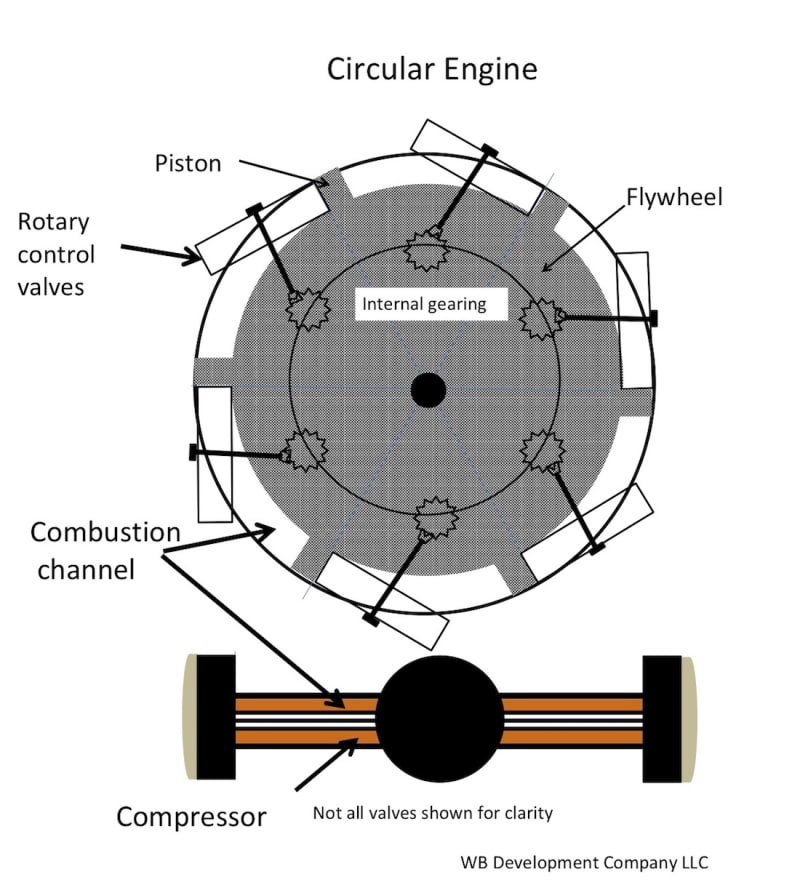Function – It is a circular internal combustion engine. Pistons are attached to a pair of rotating wheels (flywheels) connected to a central driveshaft. The pistons rotate in separate channels, one for combustion and one for compression which encircle the assembly. A slotted rotating ring crosses both channels vertically creating a chamber between itself (the bulkhead) and each piston. Fuel is injected into this temporary chamber and is ignited. The combustion forces the piston forward to the next rotating rotary valve. A slot in that valve allows the piston to pass then quickly closes behind the piston repeating the previous action. Pistons are located equidistant and function simultaneously. The compressor is nearly identical to the combustor with the exception that each piston draws air behind it for the trailing piston to compress against the closed rotary valve ahead. Fuel can be injected either into the air drawn into the compressor or as it passes from the compressor to combustion. Air and fuel management is controlled by separate rotational valves (not illustrated) which precisely control timing. Ignition is controlled conventionally and exhaust is through open ports. It runs on low octane gasoline or natural gas.
Benefits – The long distance between piston and axis of rotation creates a long moment arm resulting in very high torque (thousands of ft-lbs). The long expansion chambers capture much of the combustion energy and help produce overall efficiency of between 50% and 65% depending on design. Springs are absent eliminating fueling during idling adding to operational efficiency.
Manufacture – The engine is very simple and has a very low part count. Some designs can be air cooled further reducing part count. Only standard machining operations would be used and material would be primarily aluminum with no exotic material or components. Its weight and cost would be a fraction of current engines. A 5000 hp engine is estimated at around 2000 lbs.
Novelty – Its structure allows the simultaneous operation of the engine functions (induction, compression, combustion and evacuation) creating basically a single cycle engine producing continuous power. A 4 piston version fires 16X/evolution, 6 piston (illustrated) 36X/ evolution. The rotary valve makes this possible. The compressor enjoys this multiplier effect producing high volume compressed air.
Market – it is broadly applicable to transportation in nearly all forms. Its light weight, low cost and very high torque is even applicable to aviation. It can generate electricity from individual homes to large decentralized installations running on natural gas. It’s also an ideal diesel replacement.
Problem Solved – It’s a new lightweight engine that meets the need for high efficiency, low fuel consumption, reduced emissions, and broad application due to its flexibility, low cost and lightweight.
Like this entry?
-
About the Entrant
- Name:Walter Bonin
- Type of entry:individual
- Software used for this entry:several
- Patent status:pending





